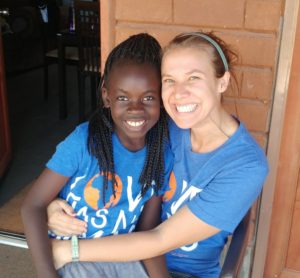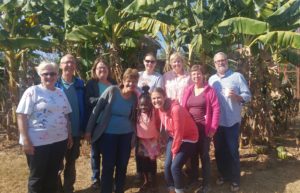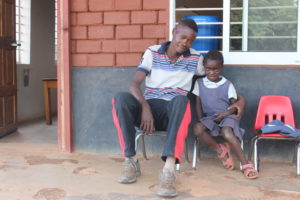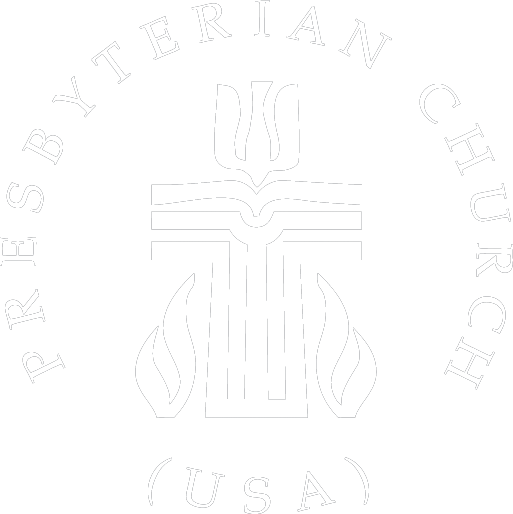 Emmanuel is proud to support the missionary work of Rachel VanGent who serves in Zambia, Africa as a head teacher at The Esther School. Their mission is:
Emmanuel is proud to support the missionary work of Rachel VanGent who serves in Zambia, Africa as a head teacher at The Esther School. Their mission is:
to provide a holistic, Christian education that develops the passion and skills students need to become servant leaders in the Kingdom of God.

 In June 2017 a group of Emmanuel staff and members visited the school to help run a camp for the students. Another group will be returning to help the school in March of this year.
In June 2017 a group of Emmanuel staff and members visited the school to help run a camp for the students. Another group will be returning to help the school in March of this year.
This post is the fourth and final of a series of stories we have shared about the June 2017 trip. Perhaps in these words and pictures you will find yourself considering a call to join us in the upcoming March trip. If finances are a barrier, some assistance may be available. For more information please email hello@emmanuelto.org to get connected, or talk with Dan VanGent or Carol O’Keefe directly. Additionally, we will be collecting gently used shoes and clothing to bring on the trip so please start looking though your closets!
Check out the other posts in the series:
“Why I am Going to Zambia” by Danny Chulack
“Exploring Purpose in Zambia” by Kate Paulis
“God Has Given Me a Love For Africa” by Carol O’Keefe
“Why Go to Zambia” by Debbie Barber
When I went with the team from the church to Zambia in 2017, I brought back stories to tell to our kids during Camp Joy, our week long art and science camp.
The Esther School in Zambia was started in 2012 after a tribal leader asked some North American missionaries to start a school in his community. This leader wanted the best for his people. So he donated the land for the school and encouraged his people to support it.
The Esther School began with just a preschool and kindergarten class.
Each year since they opened, they have added a grade, and now have about 190 students in preschool through 6th grade. One of the goals of the Esther School is to help students become leaders in their community. Students are taught to teach and help others in their families.
They have found that families with just one student at the Esther are achieving more, even for the children who attend the overcrowded regular government school due to that one Esther School student being able to tutor older siblings and parents.
Every family with a child at the Esther School volunteers at the school in some way.
 Some of the mamas cook breakfast and lunch for the children. Others bring extra vegetables from their own farms. Some fathers do construction work, building new classrooms for the grades that will be added the following year. One father takes care of the chickens owned by the school and ensures that there are eggs to add to the children’s diet.
Some of the mamas cook breakfast and lunch for the children. Others bring extra vegetables from their own farms. Some fathers do construction work, building new classrooms for the grades that will be added the following year. One father takes care of the chickens owned by the school and ensures that there are eggs to add to the children’s diet.
Everyone does what he or she can to help out.
That father also preaches every Sunday at the church that meets in the school’s meeting room.
 There is a community well at the school. It is in the middle of the school’s vegetable garden. Anyone is welcome to come to get water from the school. And everyone who gets water pumps a little extra out to help water the vegetables.
There is a community well at the school. It is in the middle of the school’s vegetable garden. Anyone is welcome to come to get water from the school. And everyone who gets water pumps a little extra out to help water the vegetables.
When a big storm blew off the roof of the preschool classroom and the library and the rain threatened to destroy everything, the teachers ran to try to save the books and other materials. But before they could get started, many people from the surrounding town had gathered and began collecting and drying out the books and other materials. The roof was repaired and everything was restored in no time because the entire community worked together to care for the school.
There are many more stories of success at the school. And it sounds like the Esther School has it all together! Why do we go?
First of all, the job isn’t done. The Esther School is heading into new territory, as their original students are moving into adolescence.
This March, we will be taking kits from an organization called Days for Girls. These kits will allow girls to continue to attend school during menstruation, the leading cause of girls dropping out of school in third world countries where disposable sanitary supplies are not commonly available or simply too expensive. (If you are interested in making kits for future trips, let me know! We are hoping to start our own chapter of Days for Girls at Emmanuel.)
Health care and life expectancy is improving, but there are far too many children orphaned each year.
Health education and availability of medical care is crucial. Carol O’Keefe will be doing some health education during the trip. We want to continue to listen for ways we can support and join in the work that God is doing there without imposing our own ways of doing things or importing western problems.
Another reason we go is because God calls us to work in community with others.
Of course we love Rachel and Moriah VanGent, our own missionary family at the Esther School and we want to help and encourage them as much as possible. But there is also an amazing team of Zambian and North American teachers working together.
They are living out what it means to build bridges—bridges between cultures, teaching styles, languages, food choices, and more.
As we attempt building bridges here in Thousand Oaks, reaching out to others who are different from us and loving them without asking them to change who they are, we can feel discouraged when things don’t go as well as we had hoped. But we can learn from and be encouraged by the love and grace shown by the Zambian and North American teachers at the Esther School.
I hope our team to Zambia this March will bring back many more stories and deepening relationships with our Zambian brothers and sisters. Let’s all take part in listening to and learning from God’s people there so that we might all grow in community and in service to God.



